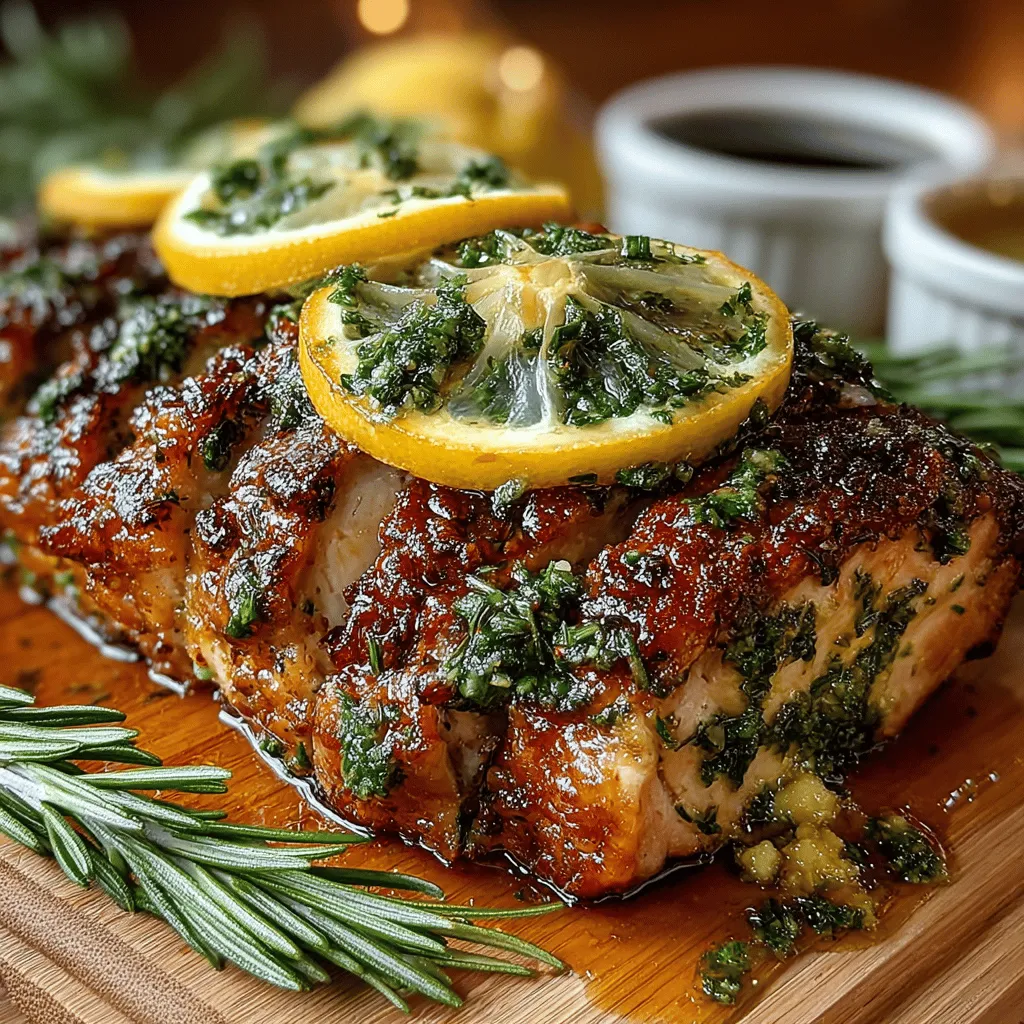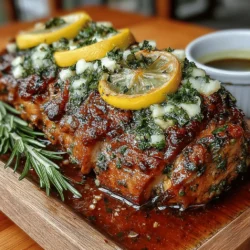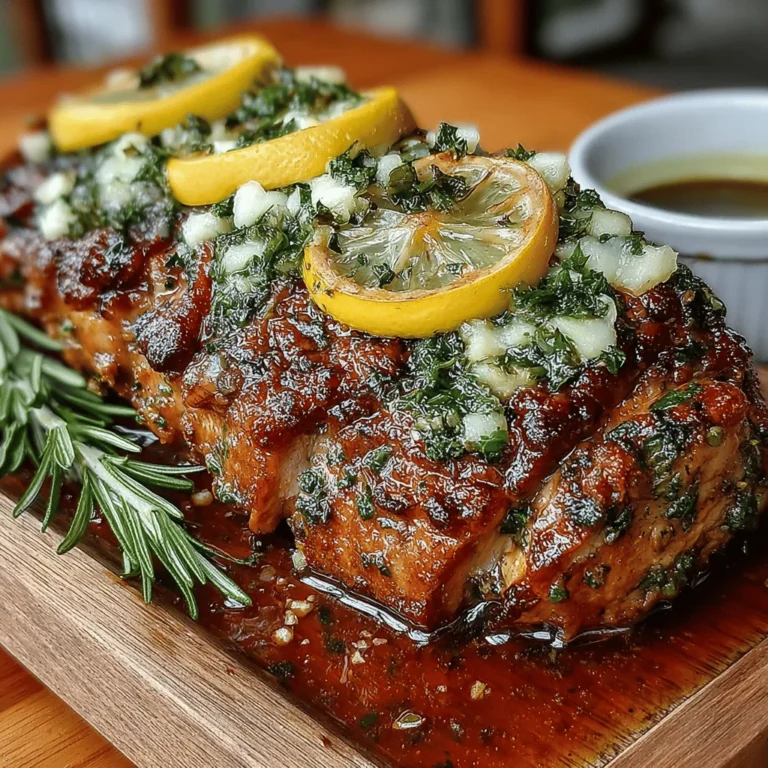Turkey is a staple in festive meals, especially during holidays like Thanksgiving and Christmas. A perfectly roasted turkey breast can be the centerpiece of your table, and using a flavorful herb butter not only enhances the taste but also ensures that the meat remains juicy and succulent. This Herb Butter Roasted Turkey Breast recipe will guide you through the steps to create a savory and aromatic dish that will impress your family and guests.
Ingredients
– 1 bone-in, skin-on turkey breast (about 4-6 pounds)
– 1 cup unsalted butter, softened
– 2 tablespoons fresh rosemary, chopped
– 2 tablespoons fresh thyme, chopped
– 2 tablespoons fresh sage, chopped
– 2 tablespoons fresh parsley, chopped
– 4 cloves garlic, minced
– Zest of 1 lemon
– Juice of 1 lemon
– Sea salt, to taste
– Freshly ground black pepper, to taste
Instructions
1. Preheat your oven to 350°F (175°C).
2. In a mixing bowl, combine the softened butter, rosemary, thyme, sage, parsley, minced garlic, lemon zest, lemon juice, sea salt, and black pepper. Mix until all ingredients are well incorporated.
3. Pat the turkey breast dry with paper towels to ensure crispy skin when roasted.
4. Carefully loosen the skin of the turkey breast by gently sliding your fingers between the skin and the meat, taking care not to tear the skin.
5. Spread half of the herb butter mixture directly onto the turkey breast meat under the skin, ensuring even coverage.
6. Rub the remaining herb butter all over the outside of the turkey breast, covering it completely.
7. Place the turkey breast on a roasting rack in a roasting pan and transfer it to the preheated oven.
8. Roast the turkey breast for approximately 1.5 to 2 hours, or until the internal temperature reaches 165°F (74°C), basting periodically with the pan juices.
9. Once cooked, remove the turkey from the oven and let it rest for at least 20 minutes before carving.
Understanding the Ingredients
The main ingredient in this recipe is a bone-in, skin-on turkey breast. This cut of meat is ideal for roasting as it provides both flavor and moisture, thanks to the skin and the bones.
Unsalted butter plays a crucial role in this recipe, as it not only adds richness but also helps in retaining moisture during the roasting process. The herb blend, featuring rosemary, thyme, sage, and parsley, introduces a medley of flavors that elevate the turkey. Each herb brings its unique profile: rosemary adds a robust pine-like taste, thyme contributes earthiness, sage provides warmth, and parsley offers a fresh finish.
Garlic and lemon are essential components as well. Garlic infuses the dish with a savory aroma, while the lemon zest and juice brighten the flavors and cut through the richness of the butter. Finally, seasoning with sea salt and black pepper ensures that every bite is well-balanced and flavorful.
Preparation Steps for the Perfect Herb Butter
Creating the herb butter mixture is a key step in this recipe. Start by ensuring that the butter is softened at room temperature to allow for easy blending of the herbs and spices. A well-mixed herb butter not only delivers flavor but also helps to keep the turkey moist.
When mixing the herbs and spices, it’s important to achieve a balance in flavor. Adjust the quantities based on your personal preference or the freshness of the herbs.
Preparing the Turkey Breast for Roasting
Before roasting, patting the turkey breast dry is essential for achieving crispy skin. Moisture on the surface can lead to steaming instead of roasting, which will affect the texture of the skin.
When loosening the skin, take your time to ensure you do not tear it. This process allows the herb butter to penetrate the meat, providing flavor throughout the turkey breast. Following these steps will ensure a delicious and visually appealing roast that will be the highlight of your meal.

How to Effectively Apply the Herb Butter for Maximum Flavor Infusion
To ensure that your Herb Butter Roasted Turkey Breast is bursting with flavor, it’s essential to apply the herb butter properly. Start by softening the butter at room temperature to make it easier to spread. Once softened, use your fingers or a spatula to loosen the butter, adding the herbs, garlic, and seasoning thoroughly.
When applying the herb butter, gently lift the skin of the turkey breast and spread the mixture directly onto the meat. This technique allows the flavors to penetrate deeply during roasting. Afterward, ensure that any remaining butter is spread evenly over the skin to promote even browning and enhance the flavor during cooking.
The Roasting Process
Ideal Oven Temperature
Preheat your oven to 325°F (165°C). This temperature is optimal for roasting turkey breast, allowing it to cook evenly without drying out. A lower temperature ensures that the meat remains juicy while allowing the skin to crisp up beautifully.
Importance of Using a Roasting Pan with Chicken Broth
Using a roasting pan filled with chicken broth not only keeps the turkey moist but also infuses additional flavor into the meat. The steam created from the broth helps in maintaining a tender texture, while the broth itself can be used to create a delicious gravy after roasting.
Covering with Aluminum Foil
Initially covering the turkey breast with aluminum foil helps prevent the skin from over-browning. Roast the turkey covered for the first half of the cooking time, then remove the foil to allow the skin to crisp up. This technique ensures a perfect balance of moisture and a golden exterior.
Checking for Doneness
To ensure your turkey breast is cooked to perfection, use a meat thermometer to check for doneness. The internal temperature should reach 165°F (74°C) in the thickest part of the breast. This step is crucial for food safety and ensures that your turkey is juicy and flavorful.
Resting and Carving the Turkey
Importance of Resting the Turkey
Resting the turkey breast for at least 20 minutes after roasting is critical. This step allows the juices to redistribute throughout the meat, leading to a more succulent result. If you carve the turkey too soon, the juices will run out, resulting in dry meat.
Techniques for Carving the Turkey Breast
When carving the turkey, use a sharp knife to slice against the grain for the most tender pieces. Start by removing the breast from the bone, and then slice it into even portions for serving. This presentation creates an appealing dish, showcasing the juicy and flavorful meat.
Suggestions for Garnishing
Elevate your presentation by garnishing the carved turkey breast with fresh herbs, such as parsley or thyme, and lemon slices. This not only adds visual appeal but also enhances the overall flavor profile of the dish.
Serving Suggestions
Side Dishes That Pair Well
Herb Butter Roasted Turkey Breast pairs beautifully with a variety of side dishes. Consider serving it alongside classic options such as roasted vegetables, creamy mashed potatoes, or a vibrant cranberry sauce. A fresh salad or stuffing can also complement the rich flavors of the turkey.
Occasions to Serve This Dish
This dish is perfect for numerous occasions, including Thanksgiving, family gatherings, or holiday dinners. Its impressive appearance and rich flavors make it a centerpiece that will impress your guests.
Tips on Leftovers
If you have leftovers, get creative! Use the turkey in sandwiches, salads, or casseroles. You can also shred the meat for tacos or quesadillas, maximizing the delicious flavors of your Herb Butter Roasted Turkey Breast.
Conclusion
The Herb Butter Roasted Turkey Breast is a delightful dish that combines rich flavors and tender meat, making it a memorable addition to any meal. From the careful application of herb butter to the roasting process and garnishing techniques, each step contributes to the overall enjoyment of this recipe.
We encourage you to try this recipe for your next gathering, creating a meal that not only delights the palate but also brings loved ones together. Cooking is a joyful experience, and sharing delicious food is a wonderful way to celebrate togetherness.


